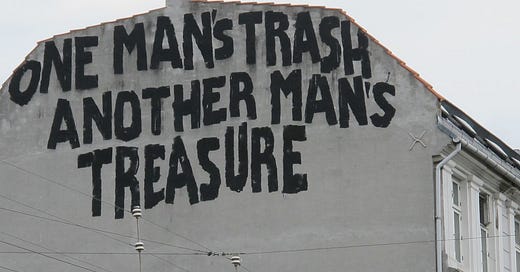New York is so bad for real estate that it's good
National capital markets trends are overpowered by local supply/demand imbalances in NYC metro area that will serve to sustain rent growth for extended periods of time
The Federal Reserve Presidents of Minneapolis and Dallas both recently expressed a reluctance to lower interest rates this June because of sustained inflation. Saying that the interest rate environment today is unfavorable to real estate buyers is stating the obvious, but what's news to some investors is that debt markets may remain challenging for an extended time past 2024.
Key U.S. economic indicators demonstrate the trappings of a robust and healthy economy, which serves only to delay upcoming interest rate cuts. Data from the March jobs report and Consumer Price Index (CPI) and core CPI came in hotter than expected, and this sent 10-year treasury yields past 4.5%, their highest point in the last three months. Expectations from traders around rate cuts have also soured. At the beginning of the year, pricing on these futures contracts implied the Fed Funds rate would reach 4.0% by the end of 2024. Today, Fed Funds futures imply a benchmark Fed Funds rate of 4.75% by the end of 2024, indicating just three 25 bps rate cuts. This change demonstrates a marked increase in anticipated rates and a lowering of expectations for the year. Finally, the strength of the M&A markets and the all-time highs achieved in equity market indexes this year (S&P 500 did this 16 times!) do not help the Fed to become more comfortable with the idea of June rate cuts.
Besides national capital market problems, New York City investors must face local challenges posed by good cause eviction for existing property owners and contend with the difficulties of developing new properties if they are developers. According to New York University's Furman Center, the costs of building housing without a tax abatement in New York City are prohibitive to development:
"In high-rent areas, the absence of 421-a would require that land values decline by more than 30 percent for a developer to bid for a site.
For mid-rent markets, the reduction is even larger, rendering the amount that the developer could pay for the land near zero.
In lower rent neighborhoods, the model shows that the amount the developer could pay for the site goes negative—a developer would not only need to be able acquire the land at zero cost but would also require an additional subsidy for the development for the project to be financially viable."
Been, V., Willis, M., Murphy, M., & Miller, N. (2024, March 28). Principles to Guide an Improved Tax Exemption to Secure New Rental Housing: Fostering Affordability and Equitable Development in New York City. Furman Center's Critical Land Use and Housing Issues for New York State in 2024, 5, 8.
The Furman Center depicts the roadblocks to developing multifamily housing in NYC, but it also highlights the strategic advantages owners have. Housing in New York City is highly coveted by apartment renters, and it's (essentially) no longer being produced. The same is true of hotels. Due to new laws that no longer allow the development of hotels as-of-right (a special permit is required) and unyielding labor unions, hotel development will grind to a near halt. On the other hand, the hospitality sector benefits from the resurgence of post-pandemic tourism and business travel. With solid demand flows and extremely flat supply, the owners of scarce goods like multifamily and hotels get to price their products more aggressively. Anti-development regulations hurt investors, but they all but guarantee rent growth will persist. The political challenges that keep investors from committing capital to the NYC multifamily market also contribute to why NYC has been such a great place to invest, even post-2019.
Another challenge is good cause eviction, but it could also be viewed as another barrier to entry that keeps outsiders out and makes insiders rich. Good cause eviction would make the unregulated rental housing industry look more like rent stabilized housing than anything else. Owners would need to follow mandatory compliance measures and have less control over the business plans for their investments. New real estate investors might park their capital outside New York City for these reasons. That means NYC owners who can offer high-quality housing to the mountain of renters seeking to live in NYC will benefit from even greater rent premiums. According to the Furman Center, if good cause passes:
"Owners may, for example, convert rentals into condominium forms of home ownership (…) Investors in new construction who believe that the requirement makes owning a rental property less profitable or riskier may choose to invest in other types of housing, such as condominiums or other for-sale housing, or to invest in other jurisdictions or industries."
Been, V. Willis, M., Murphy, M., & Miller, N. (2024, April 3). Balancing Act: Navigating the Tradeoffs of Good Cause Eviction Legislation. NYU Furman Center's Critical Land Use and Housing Issues for New York State in 2024, 4, 27-28.
Good cause may incentivize owners to look outside traditional multifamily investments into investments built for sale instead of for rent, like condos or townhomes. Performing property conversions is the easiest way to create new for-sale properties like condos and townhomes, but doing so reduces the rental housing supply. If performed on a broad enough level, a "west village effect" happens, and the neighborhood rents grow because rental housing becomes scarcer and demand stays high.
More important than the state of U.S. capital markets and the outcome of NYS budget negotiations, housing supply and demand imbalances offer NYC multifamily investors a distinct benefit. The more elected officials implement restrictions on housing operators and developers, the more insiders stand to gain from their current holdings thanks to the increasing housing scarcity and through their ability to operate and manage buildings with excellence.
I am bullish on New York City. Call me at 212 658 1471


